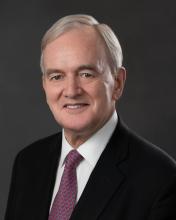You are here
Is the US economy running out of slack?
Jul 31,2021 - Last updated at Jul 31,2021
NEW YORK — How much slack is there in the US economy? In economics, the “gap version” of Okun’s law holds that a one-percentage-point increase in the unemployment rate is associated with a two-point decline in the real (inflation-adjusted) GDP growth rate below its potential. The gap matters, because the closer the economy is to its potential, the more we should worry about inflation.
According to the Bureau of Labor Statistics (BLS), the US unemployment rate was 5.9 per cent in June, compared to the pre-pandemic (February 2020) rate of 3.5 per cent. If we take the latter figure as an estimate of the natural unemployment rate, we get an output gap of 4.8 per cent. Assuming potential output grows at an annual rate of 2 per cent, non-inflationary real GDP growth for the coming year would hit 6.8 per cent. Since the US Federal Reserve expects 7 per cent growth this year and 3.3 per cent growth in 2022, that would suggest the US is still at least a couple of years away from the inflation threshold.
This guesstimate of the output gap can be criticised as either too low or too high. The too-low camp argues that the official unemployment numbers — 9.5 million in June 2021, as against 5.7 million in February 2020 — underestimate the amount of slack in the labour market. The BLS reports that in June, “the number of persons not in the labour force who currently want a job was 6.4 million”, an increase of “1.4 million since February 2020”. After accounting for those additional 1.4 million, the unemployment rate rises to 6.8 per cent, yielding an output gap of 6.6 per cent.
Moreover, the number of people employed part-time for economic reasons has grown by 229,000 since February 2020. Treating this category as unemployed would boost the unemployment rate to 6.9 per cent, and the output gap to 6.8 per cent. The BLS also publishes an estimate of temporarily laid-off workers who should have been classified as unemployed but were misclassified as employed. Counting these would bring the June 2021 seasonally adjusted unemployment rate to 7.1 per cent implying an output gap of 7.2 per cent.
But those in the too-high camp insist that there is little or no slack in the economy. They would object to all three of the preceding amendments to the unemployment rate. Why should someone who is not looking for work, or who is unavailable to work, be counted as part of the labor force? Part-timers should be counted as part-time unemployed. And even the BLS, they note, admits that its estimate of “employed” temporarily laid-off workers probably overstates the size of the misclassification error.
Moreover, they would contend that the natural rate is probably higher than 3.5 per cent. The key number to consider is unfilled job vacancies. In May 2021, there were 9.2 million (5.7 per cent of the labour force) “Total Nonfarm Job Openings”, which was almost the same as the official number of unemployed people (9.3 million). There also have been consistent reports from around the country of businesses struggling to find workers, suggesting that there is a massive mismatch between labor demand and supply. If the effective supply of labour is materially less than the notional supply, the natural rate of unemployment necessarily rises.
Such a massive labour mismatch is certainly plausible, given the effects of the COVID-19 pandemic. The nature of work changed dramatically as a result of lockdowns and other non-pharmaceutical interventions. In some cases, working from home is not nearly as productive as working in an office, factory, or other non-residential workplace.
Even with most official restrictions on employment-relevant activities lifted, concerns about contracting COVID-19 have curtailed the full return to pre-pandemic working arrangements. After all, childcare responsibilities continue to keep many workers (especially women) at home. Given limited daycare capacity, parental labour supply is bound to be impaired.
True, assuming the pandemic does not get out of control again, the start of the school year in the fall should bring a steady return to pre-crisis normalcy. But even then, some things will have changed permanently, which means that at least part of the labour mismatch may prove structural in nature. In particular, the rapid adoption of digital technologies — including a veritable information-tech and fintech explosion — is already part of the new normal.
Owing to these new capabilities, many jobs, both in manufacturing and in services, will have become redundant. In fact, there is good reason to believe that an automation field day is already underway. While the technological revolution prompted by the pandemic will undoubtedly create new jobs, it has necessarily tended towards labour-saving and labour-replacing innovations.
Because the pandemic-driven push towards automation is unprecedented, there is no reliable numerical estimate of its impact on labor markets. My best guess is that it could easily raise the natural unemployment rate by one or two percentage points, with an associated 2-4-point reduction in the output gap.
Finally, one must consider whether financial incentives have reduced the effective supply of labour. Beyond enhanced unemployment benefits that will expire in September 2021, there have also been various cash disbursements, including additional child benefits. These will have relaxed many workers’ budget constraints, allowing them to be pickier about employment. But that also means there could be a positive labour supply shock in September. Though reliable estimates of a “labour-return” effect are lacking, my best guess is that the natural unemployment rate will fall by 0.5 points, boosting the output gap by one point.
Discounting the three “higher-slack” amendments mentioned above, my tentative estimate of the output gap after September 2021 is between 1.8 per cent and 3.8 per cent, which implies room for non-inflationary growth of 3.8-5.8 per cent for the coming year. But that room could be exhausted within a year, leaving the Federal Reserve at risk of falling behind the curve.
Willem H. Buiter is an adjunct professor of international and public affairs at Columbia University. 2021.













